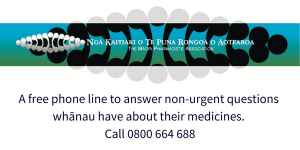Nortriptyline is used to treat many types of persistent pain. It is especially good for nerve pain such as burning, shooting or stabbing pain, and for pain that keeps you awake at night. Nortriptyline works by increasing the amount of specific nerve transmitters in the nervous system, reducing pain messages arriving in the brain. Once you start nortriptyline it usually takes a week or so for pain to begin to wear off.
Note: Nortriptyline is also used to treat depression and to help quit smoking. This page focuses on its use for persistent pain.
Low or no data? Visit zero.govt.nz, scroll down the page then click on our logo to return to our site and browse for free.
Nortriptyline for chronic pain
Sounds like 'nor-TRIP-ti-leen'
Key points about nortriptyline for persistent pain
- Nortriptyline is used to treat many types of persistent pain including nerve pain.
- Nortriptyline is also called Norpress.
- Find out how to take it safely and possible side effects.

In Aotearoa New Zealand nortriptyline is available as tablets (10 mg and 25 mg).
- The usual dose to treat nerve pain in adults is 10 mg a day. This can be increased if necessary. The maximum dose of nortriptyline for treating pain is 75mg a day, but this amount is only prescribed under the supervision of a pain specialist.
- Always take your nortriptyline exactly as your doctor has told you. The pharmacy label on your medicine will tell you how much nortriptyline to take, how often to take it, and any special instructions.
- Swallow the tablets whole with a glass of water: Do not crush or chew the tablets.
- Timing: You can take nortriptyline with or without food. It is best to take nortriptyline in the evening. Start by taking it 1 hour before going to bed, if you find that you feel drowsy the next morning, try taking it earlier in the evening.
- Missed dose: If you forget to take your dose, take it as soon as you remember that day. But if it is nearly time for your next dose, just take the next dose at the right time. If you only take one dose at bedtime and you miss the dose, do not take the medicine in the morning. Wait until the next night and skip the missed dose.
- Keep taking nortriptyline regularly: You may notice some initial benefit within 2 weeks, however it may take up to 2 months for a full effect.
- If you think nortriptyline is not working for you: Nortriptyline does not work for everyone. If you do not feel any improvement in your pain after 2 months, do not suddenly stop taking the tablets but speak to your doctor about other options.
Here are some things to know when you're taking nortriptyline. Other things may be important as well, so ask your healthcare provider what you should know about.
Nortriptyline may affect your ability to drive: Nortriptyline can affect your concentration (how you focus or pay attention). It can slow your reaction times and cause sleepiness, blurred vision, dizziness, or make you feel anxious or jittery. Be careful when driving or using tools until you know how this medicine affects you. Do not drive if you experience any of these. If you are a driver, talk to your doctor about your concerns.
Like all medicines, nortriptyline can cause side effects, although not everyone gets them. Often side effects improve as your body gets used to the new medicine.
| Side effects | What should I do? |
|---|---|
|
|
|
|
|
|
|
|
| Did you know that you can report a side effect to a medicine to CARM (Centre for Adverse Reactions Monitoring)? Report a side effect to a product.(external link) | |
The following links have more information on nortriptyline.
Norpress(external link) Medsafe Consumer Information Sheet, NZ
Nortriptyline(external link) NZ Formulary Patient Information, NZ
Resources
5 questions to ask about your medications(external link) Health Quality and Safety Commission, NZ, 2019 English(external link), te reo Māori(external link)
References
- Nortriptyline(external link) NZ Formulary, NZ, May 2022
- Diagnosing and managing headache in adults in primary care(external link) BPAC, NZ, 2017
- The role of medicines in the management of depression in primary care(external link) BPAC, NZ, 2017
Credits: Healthify He Puna Waiora Pharmacists. Healthify is brought to you by Health Navigator Charitable Trust.
Reviewed by: Sandra Ponen, BPharm, MPH, Auckland
Last reviewed:
Page last updated:





